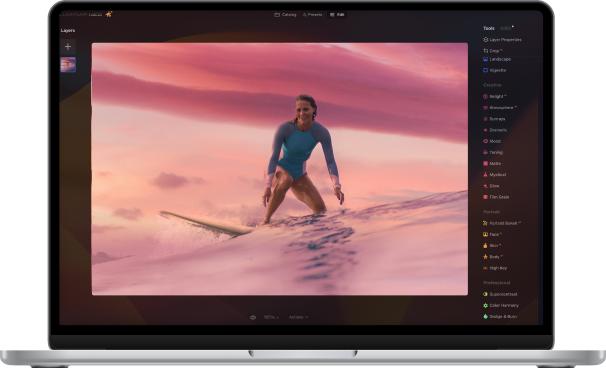How to Photograph Fireworks
April 26
8 min. to read
There's nothing quite like a dazzling, colorful fireworks display. Not surprisingly, fireworks are also a favorite subject of photographers everywhere. What you may be surprised to learn, though, is that they aren't as difficult to capture with your camera as you might think. Let's go over some of the basics to get you on the right track to creating beautiful fireworks photos.
Why Fireworks are Challenging
There are several unique challenges involved in shooting fireworks and that's part of the fun. Understanding them and compensating for them ahead of time is the best way to ensure successful photos. Here's a short list:
- They're bright: Fireworks themselves are extremely bright showers of sparks and burning objects. Since they happen mostly at night, the environment around them is dark. That means that you need to either spot meter for them or set your exposure manually. Trust me; manual exposure is the right choice.
- They require long exposures: To get the best effects, you want to at least capture the burst, from the moment it starts until the sparks die out. Capturing the trail of the rockets that take them skyward also adds to the photos. That means your shutter may be open for several seconds.
- They're unpredictable: The unpredictability of a fireworks display is part of the excitement. You never know exactly where or when the next one will be set off. Even then, it's impossible to predict what direction it will travel, how high, when it will explode, how long it will last and how wide it will spread. That makes tracking a single rocket very difficult and presetting your shutter speed pretty much useless.
There are, of course, many variables that can add to these problems, such as the weather, but these are the most prevalent.
How to Adjust for the Challenges
With the list above and other variables in mind, here's a basic, step-by-step procedure for taking photos of fireworks:
1. Choose the Right Location
You'll want to choose your location early. Find a spot where you can take in the entire show. Take a good look at the scene and consider how much you want to include. A city skyline can add a lot to your photos. If the display is taking place over water, set up in a place that lets you capture the reflections in the water, too.
Don't worry about getting too close; you'll only have to deal with crowds jostling your equipment and getting in the way of your shots. Remember, you won't really know where the aerial show will be until it starts. Back away and increase your chances of being in the right place. You can always use a telephoto lens if you want to get in close, but wider shots are almost always more dramatic.
2. Use a Tripod and Release
Your exposures are going to be entirely too long to avoid camera shake. Set up on a sturdy tripod and use a cable release, remote release or your shutter delay timer. (Note that using the shutter delay will probably result in some poorly timed shots.)
3. Adjust Your Camera Settings
- Use the highest available resolution setting. RAW is recommended.
- If your camera has long exposure noise reduction, turn it on.
- White Balance can be set to Auto or Daylight.
- Turn off Autofocus and VR/IS (image stabilization).
- Select a low ISO setting (100 – 200) for low noise.
- Set your focus to infinity (If unavailable, you'll need to experiment as you shoot).
- Set your shutter speed to Bulb (B) and use delay or remote release.
- Set your aperture at f/8 – f/11.
4. Frame Your Shot
Create a nice composition with the scene in front of you. Remember that you won't know exactly where the fireworks will end up, so you may need to adjust one or more times. You can zoom in later if you want just fireworks.
5. Wait for the Start, then Start Shooting
Once the action starts, start shooting 1 – 3 second exposures, trying to time the opening and closing of the shutter with the best of the action. Don't be overly concerned with the timing; it's fun to surprise yourself with the results. Check your results on the first few shots and adjust your focus, aperture and ISO settings accordingly.
After the Shoot
The fun really begins when you get back home with your camera. It's incredibly exciting to review your results and process your photos to create the final images for sharing or printing. You'll probably want to do some cropping, sharpening and perhaps some noise reduction. If you were careful about focusing and keeping an eye on your exposures, the necessary adjustments should be minimal.
To get the best results from your shots, you'll need a software package that gives you options for adjusting exposure, contrast, etc. and includes features like sharpening and noise reduction. Adobe Photoshop® is probably the most well-known, but there are many alternatives available and one I particularly like for the Mac platform is Luminar. It's much less expensive, powerful, easy to use and versatile and you'll find a great set of tutorials for using it here.
Congratulations!
With these tips and a bit of practice, you should be creating awesome fireworks photos in no time!





